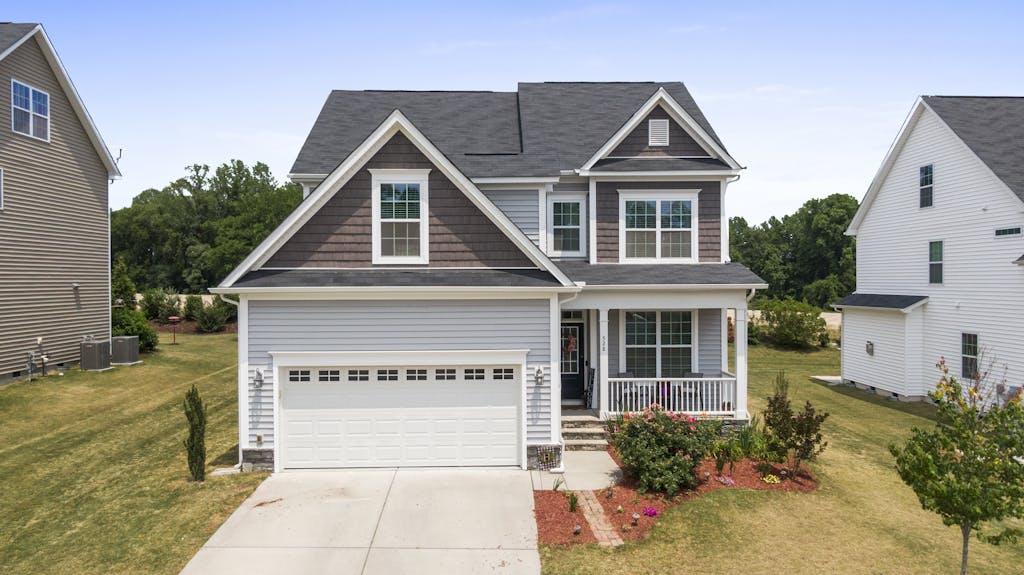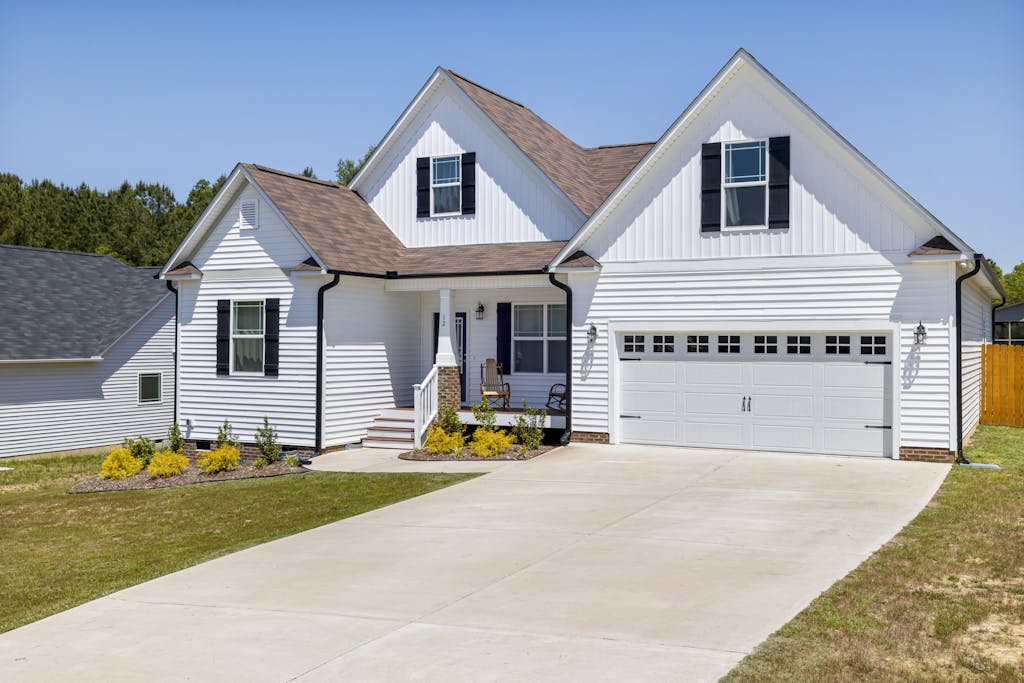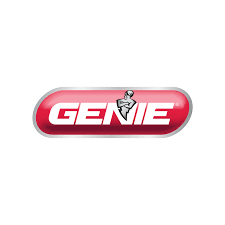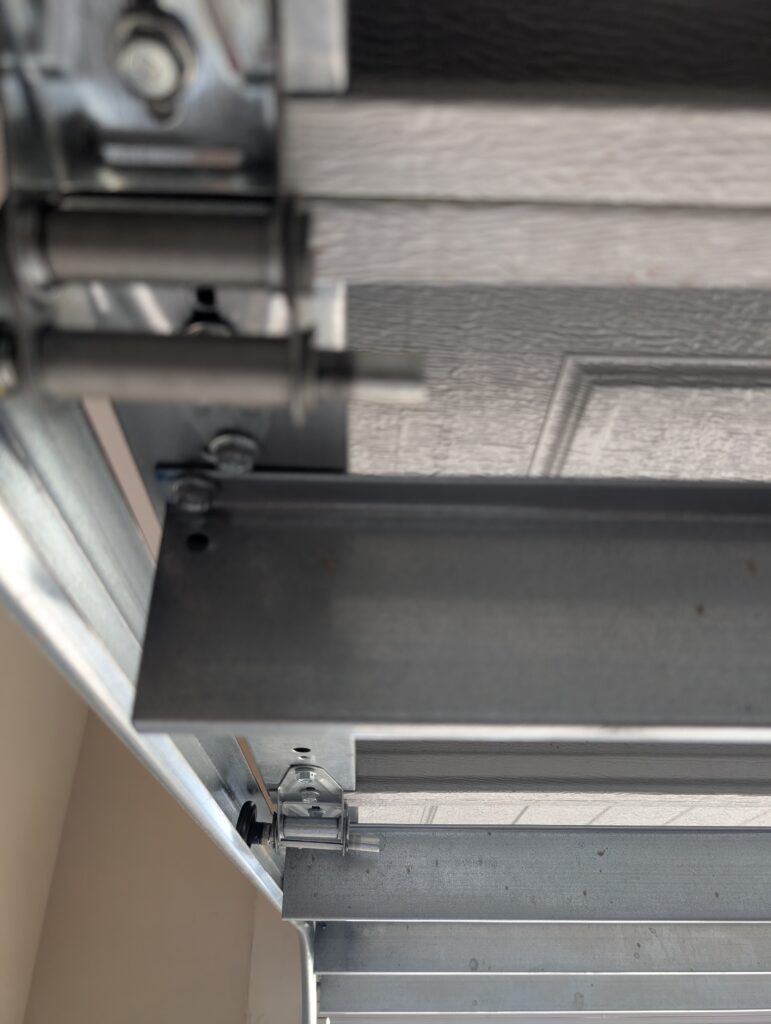Why Your Garage Door Won’t Open
Is Your Garage Door Stuck? Don’t let a stubborn garage door that won’t open ruin your day. The most frequent reason for a door refusing to open? A simple power issue, like a tripped circuit breaker. Often, flipping that breaker back on is the only fix needed. This guide will walk you through the steps to identify and resolve common reasons garage doors get stuck down, so you’re not left waiting outside or unable to move your car.
By: Kelly Larson | Published: April 29, 2025
Find Garage Door Repair Services
Get a fast & free quote | Schedule your service today
No one wants to pull into their driveway after a long day only to find that their garage door won’t open. Is it a bummer? Yes. Does it still happen to the best of us? Also yes. So when the time eventually comes, you’ll want to be armed with some troubleshooting tips and tricks to fix the problem.
Our guide walks you through how to identify the most common garage door opener problems step by step. We’ll also tell you which issues you can fix on your own and which ones are best left to a professional.
Common Reasons Why Garage Doors Won’t Open
One of the most common reasons for a garage door not opening is a power supply issue. One tripped circuit breaker switch can completely cut off power to an automatic opener. If it’s not the power, check the batteries in your remote next. Bigger problems could be caused by broken springs, safety sensors being misaligned or blocked by debris or the door falling out of the track.
Safety Precautions Before Troubleshooting
Before calling a professional or attempting a DIY fix, give your garage door system a full and safe inspection to find the root of the problem. Start by disconnecting the power to the garage door opener to avoid accidentally engaging it. Someone in your household could also try opening the door with a remote if they’re unaware that you’re working on the door.
If you suspect the issue is with the springs, don’t attempt to fix it yourself. Both torsion and extension springs are under extreme pressure. Accidentally releasing that pressure could result in serious injury or death. Professionals have the specialized tools and knowledge to complete the job safely.
Power and Connection Issues
Since you’ll already need to switch off the garage door opener’s power source, check your circuit breaker first. From there:
- Check for tripped breakers and switch them to the “On” position if necessary. If there are no tripped switches, take a look at the GFCI outlets in your garage to make sure they haven’t tripped either. If one or more of them have, press the “Reset” button and test the opener.
- Another common electrical issue comes from the opener simply being disconnected from the outlet in the ceiling. This can be caused by vibrations or jumping in the room above the garage, wiggling lose over time and other reasons.
- If the problem still persists, move on to testing your remotes and wall button. Change the batteries in your remotes and—after making sure the power is still off—remove the button from the wall and resecure any loose wires.
If troubleshooting the connection issues above doesn’t result in a fix, perform a visual inspection of the garage door opener’s wires and connect any that are loose. Garage.com will help you find a licensed professional in your area for more involved electrical repairs or if you’re not comfortable working with wires.
Mechanical Problems Preventing Your Garage Door from Opening
A telltale sign that the issue is mechanical and not electrical is if your opener’s motor is running but the door still fails to open. One of the most common mechanical failures is a broken spring. Perform a visual inspection of the torsion or extension springs from a safe distance. If a spring is broken, call a professional garage door installer to replace it. Old or damaged rollers and hinges can also lead to system failure over time.
Another issue that’s easy to identify with a quick inspection is track misalignment. If the vertical or horizontal tracks somehow get bent or have an obstruction in them, the garage door won’t make it past that bend or obstruction. The garage door opener itself may also be the culprit. From stripped gears to broken or damaged drive systems, a full garage door opener inspection may be needed to identify and fix the problem.
Sensor and Safety Feature Malfunctions
If your garage door opener engages and immediately shuts back off, it could indicate an issue with the safety sensors. Start by checking for obvious obstructions that could be breaking the infrared beam that’s sent from one sensor to the other. If nothing is in the way, inspect the photo eyes and clear any dirt or debris with a microfiber cloth. The sensors could also be misaligned. If so, loosen the wingnuts attached to the vertical tracks on either side of the garage door and adjust them accordingly.
Programming and Electronic Issues
If there’s no issue with the power, mechanics or sensors, it’s time to start troubleshooting the garage door opener’s system settings and potentially reprogramming it and your remotes. Here are a few things you can try.
- Reset your garage door opener: To iron out any system kinks the opener might be experiencing, simply unplug it, wait 10 seconds and plug it back in.
- Restore to factory settings: The owner’s manual will include instructions on how to do this. Note that while a factory reset may resolve the issue, you’ll need to reprogram all of your remotes and wall buttons.
- Check for frequency interference: If your garage is below or adjacent to a living space in your home, a device may be interfering with the opener’s signal. Interference from devices like baby monitors, appliances and WiFi routers can cause performance issues. If you suspect interference, try relocating the offending device, installing a signal booster or changing the frequency on the garage door opener.
- Reprogram your remotes and keypads: By this point, you’ve likely already checked all of your device’s batteries. The next step is to reprogram them. You can typically do this by pressing the “Learn” button on your opener followed by the button on the remote, but check your owner’s manual for specific instructions. Instructions for resetting keypads can also be found in the owner’s manual.
The garage door opener’s circuit board—the brain of the system—could also be the culprit. Open the unit and visually inspect the circuit board for any obvious damage. If you discover an issue, Garage.com can help put you in touch with a local professional to take care of the delicate and often complex repair.
DIY Fixes vs. When to Call a Professional
Checking batteries, reprogramming remotes, inspecting circuit breakers and cleaning sensors are quick and easy DIY troubleshooting procedures. But if the problem involves heavy parts like door panels, specialized equipment like the circuit board, tension-loaded springs, or complex electrical components, we recommend contacting a professional to repair your garage door.
Preventative Maintenance To Avoid Future Problems
You can avoid unnecessary wear and tear to your garage door system by performing routine maintenance at set times throughout the year. Check your owner’s manuals for the manufacturers’ specific tune-up recommendations, but at least twice per year, plan on:
- Inspecting tracks and rollers for damage and wear
- Inspecting safety sensors and wiping off any dirt or debris
- Lubricating chain drive components
- Inspecting and replacing seals and weatherstripping if necessary
- Cleaning the vertical and horizontal tracks
- Tightening any loose screws and hardware
- Visually inspecting springs and calling a professional if needed
Frequently Asked Questions About Garage Door Opening Issues

Get Your Free Quote and Schedule Your Garage Repair Today
Find top-rated companies for fast garage repairs and service to make sure your garage door system lasts. Get free quotes from garage door companies in your area.
Tips and Expert Advice for Your Garage
Stay informed with expert advice on garage door maintenance, garage door service, garage door replacement, and upgrades. Explore our blog for guides, troubleshooting tips, and more.













